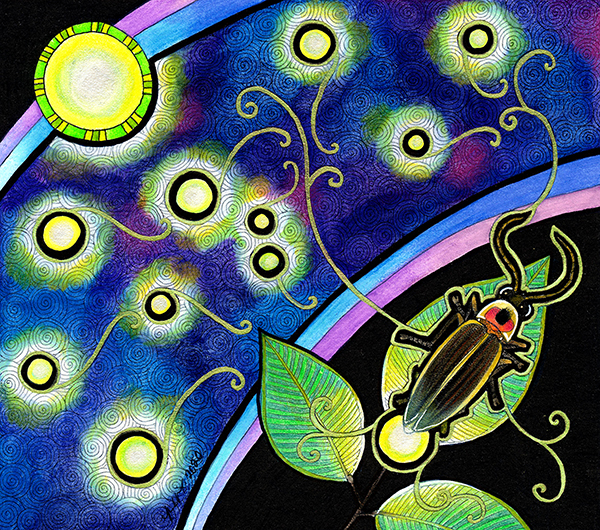Common Eastern Firefly – The Light Within
Keywords:
Flashes of insight. The light within. There’s always more than one answer, more than one idea. Forest inspiration. Night forests. Communication with the light and colour spectrum. Healing light. Nostalgia. The passage of time. Bittersweet. Speaking in code. Having your own special language with loved ones. Beware of burnout. Beware of people stealing your energy. Attracted to danger.
Description:
The common eastern firefly (big dipper firefly) – Photinus pyralis – is found in North America. It is a flying beetle that produces light from an organ in its abdomen. Males have larger light organs than the females. They are most noticeable around twilight, and hover close to the ground. Adult fireflies have short lifespans, spending most of their life in larval form.
As larvae, common eastern fireflies are carnivores, and prefer to eat soft-bodied insects like slugs, snails, worms or other larvae. However, they have been known to eat jumping spiders to take in their venom. They do not feed as adults. Other fireflies (from the Photuris family) will sometimes lure male common eastern fireflies by mimicking the light flashes of females, in order eat them and obtain chemicals that repel spiders. In order to deter predators, they’ll use unpleasant odours or sticky substances (reflex bleeding) to protect themselves.
Males in particular use patrolling flash patterns while luring a mate. Light conditions of the evening around them determine the patterns they use. Females will respond with a delayed coded flash, twisting their abdomen towards the male. Males will fly in a noticeable J-shape, but females are sedentary. If two males approach a sedentary female at the same time, they often become aggressive to each other. Males will offer food gifts of spermatophores, which females will then use to give nutrients to their eggs.
Was this helpful?
0 / 0